After Yangon, we flew to Mandalay, the last capital of the Burmese Kingdom before the British invasion.
The royal palace complex is a huge square (2 km by 2 km) surrounded by a very wide moat.
As soon as you cross the moat and enter through one of the many gates (however only one that can be used by foreigners), the hustle and bustle of the city disappears, but not the people. The military occupies most of the space with living quarters and training areas.
The palace complex is surrounded by its own fortifications with interesting ancient watch towers.
The palace itself was completely destroyed at the end of WWII and rebuilt out of concrete instead of wood. However it still possible to imagine what life was like in the time before the British took over.
Mandalay itself is a much smaller town than Yangon and felt even more like a return back in time.
I found this old post card
The scene has not changed since just after the war. Actually I took it myself – in colour!
Near the palace, there is a temple that houses the largest book in the world. In each of these little stupas is a stone tablet with inscriptions from Buddha.
There are more than 700 ‘pages’
We went to visit a local monastery just in time for the monk’s lunch. The kitchen was a hive of activity, with volunteers doing most of the work.
There are large vats where the food is being prepared – all on open fires and therefore outside
A couple of the monks come to inspect the progress
I really like this picture as you see the monks better in the reflection from the large mirror than you can see their actual body in front of the door.
The whole monastery was lined up in front of the mess hall, waiting for the signal (the ringing bell) to get in. There were a lot of other tourists, but I was lucky to get a few shots which look authentic…
The novice monks ate apart from the rest – they seemed to enjoy themselves as well they should. They only need to follow 10 rules, while a monk must follow 230 rules.
The ‘kitchen’ staff could now enjoy a little rest
After lunch along the Irawaddy River, we headed to Mingun, an old Burmese capital, home of the largest working, uncraked bell in the world
and what should have been the largest stupa (but was never finished – only the base exists today).
Along the way, we encountered a local water taxi just puttering upriver
with VIPs in the back seat
Upon arrival, we needed to “walk the plank” in order to get to shore. Literally a wooden plank about 25 cm wide with a handrail that is a length of bamboo held by two of the boat people.
Near us, was a boat full of locals (and I mean full) who had come to pay tribute to the various temples in the area. They were as intrigued by us as we were by them – actually, we were more shamed by the fact that our boat was only marginally smaller than theirs, and for only 9 passengers when they were several hundred on board.
Our group of 10 quickly grew as we were surrounded by peddlers of all ages trying to sell anything and everything.
When we climbed the stupa, we each had our little helper – the view from the top was worth it.
However, after a while, the amount of attention we were getting became a little much. We discovered that we were the only tourists that had made it to Mingun that day – everybody is eager for our business. We looked forward to the sanctity of our boat. As Joan commented after settling into our comfortable chairs, “walking the plank never felt so good!”
On the way back, we were surrounded by rain squalls, and with the setting sun, we also saw a spectacular rainbow.
Day two, we went to a hill station favoured by the British to escape the heat of the city – Maymyo.
We visit the local market where the whole top floor is busy with dress making shops.
There are still a lot of old buildings showing colonial architecture – this one is now a local hotel.
On the way back to Mandalay, we stopped at a silk weaving shop. In front of the shop is the local phone booth. While I was watching, the phone rang …
after answering, one of the ‘operator’ ran off. and a few moments later
arrived the person to answer the call.
That was it for Mandalay. Bagan is next.
(1514 Page Views)



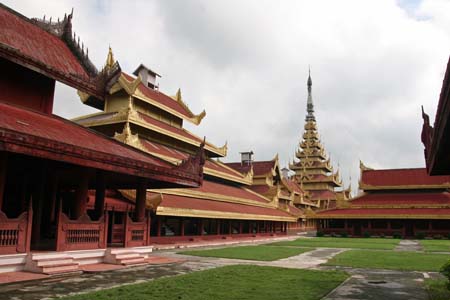


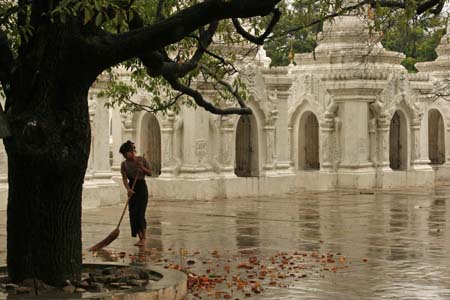
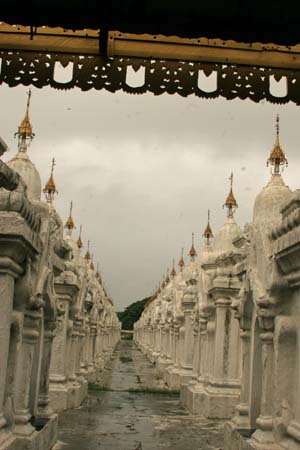
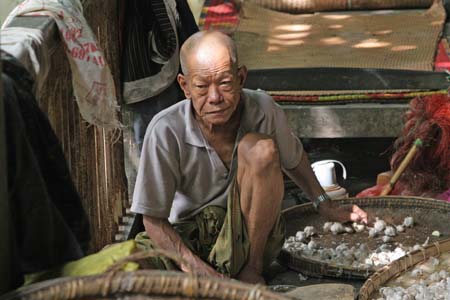
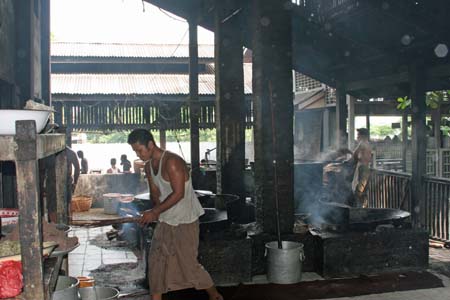
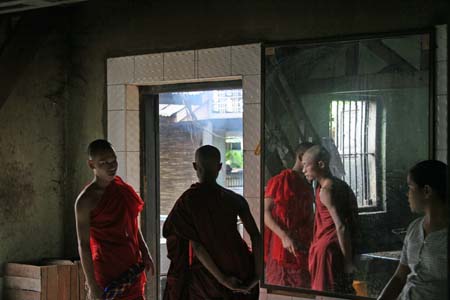

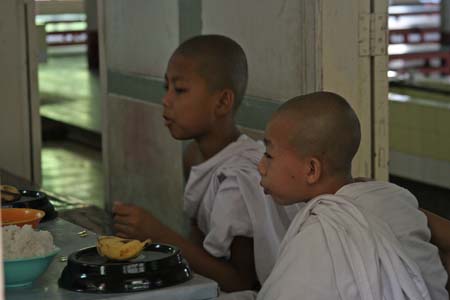
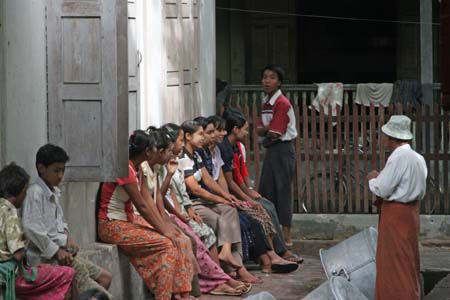
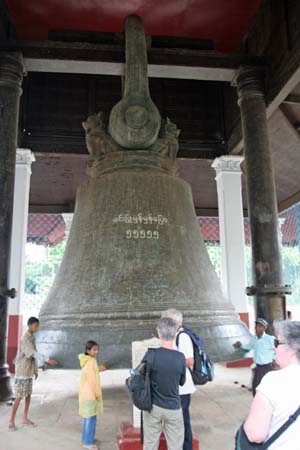
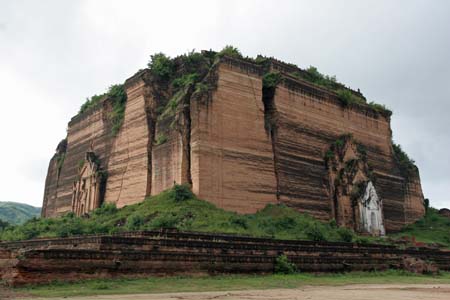
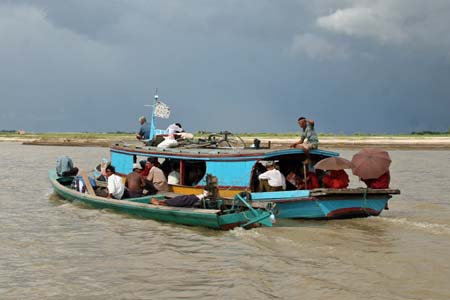

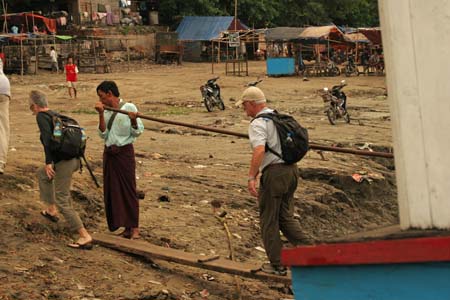
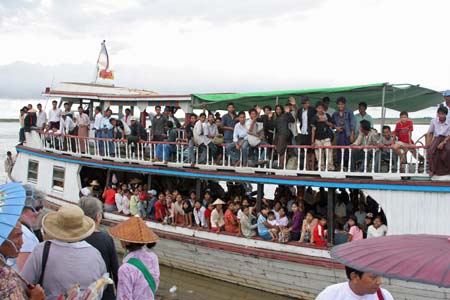



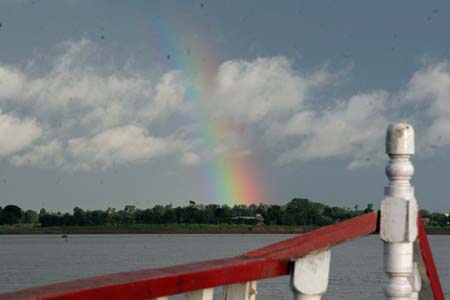

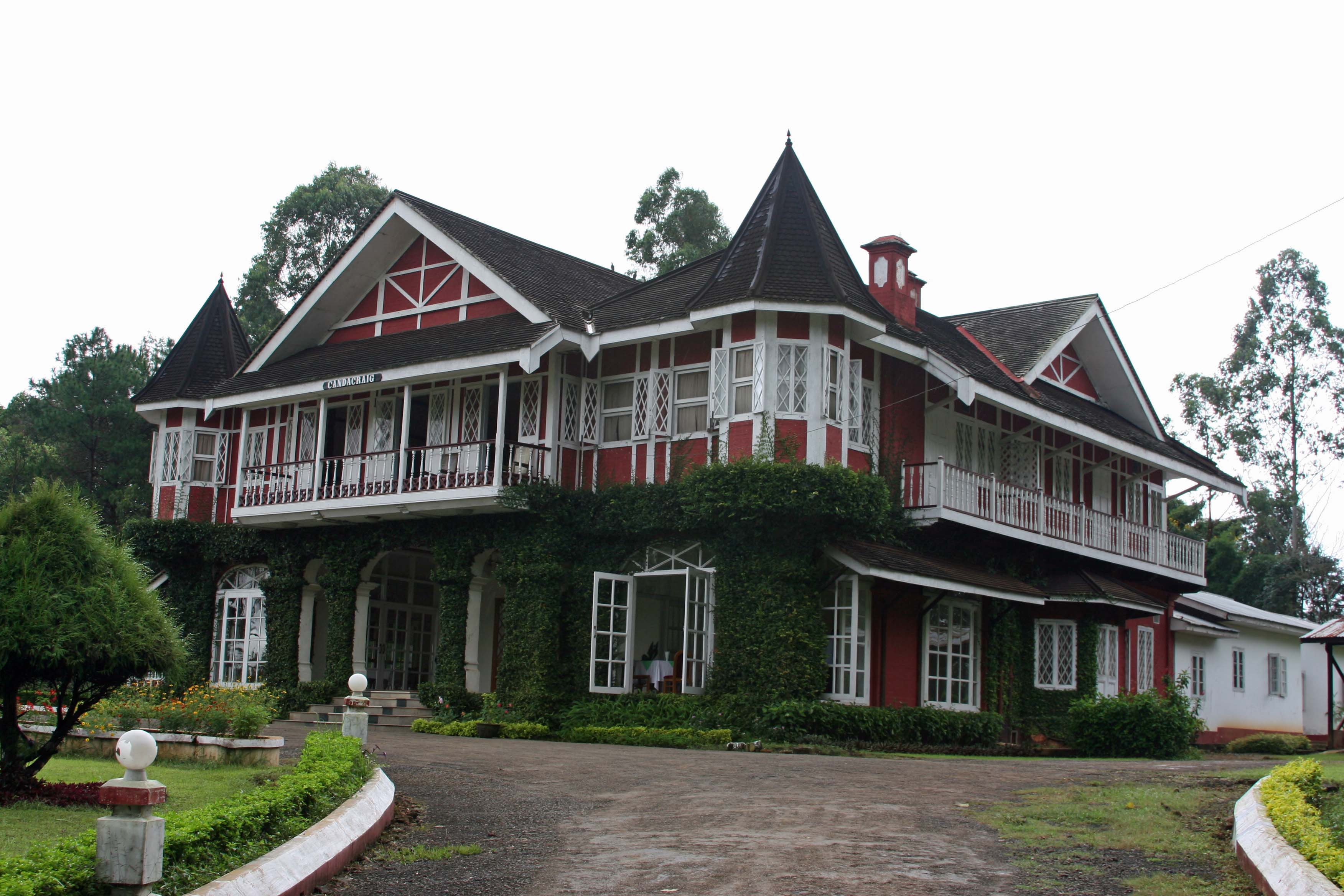
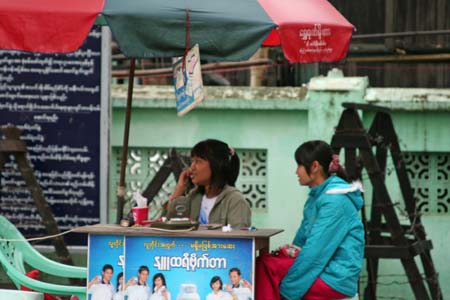

When you’re around monks, you’re certainly amongst the timeless.
We usually think of using a wireless phone as a personal device, but I guess there’s no reason that it can’t be considered a community resource.
The phone they use is actually wired … I saw one “operator” disconnecting the phone, by disconnecting each of the four wires, at what I assume must have been the end of her shift…